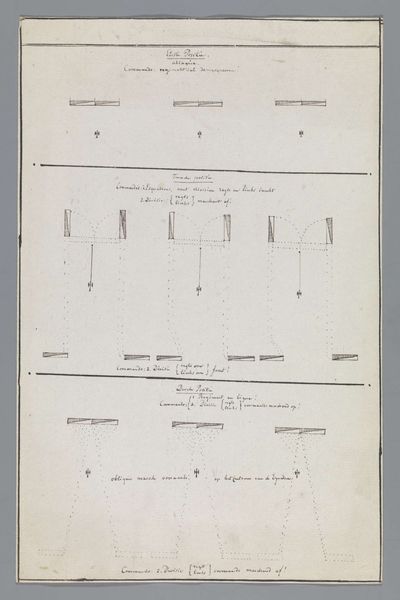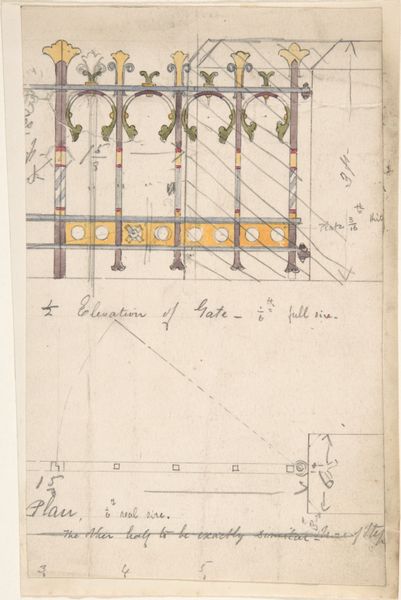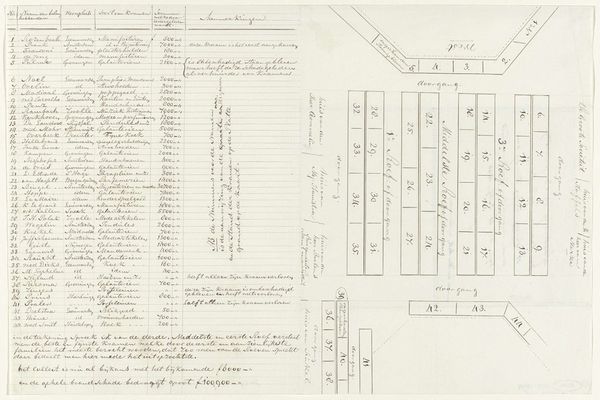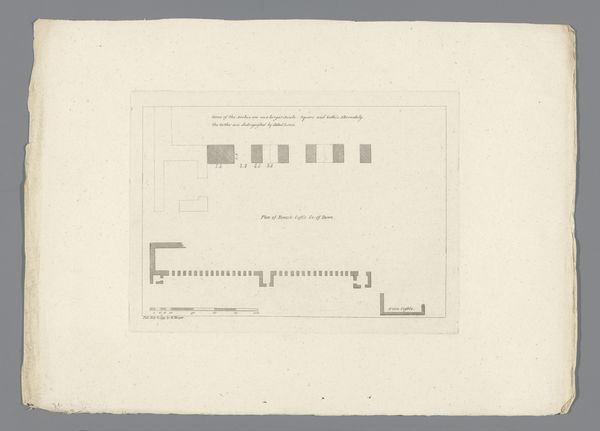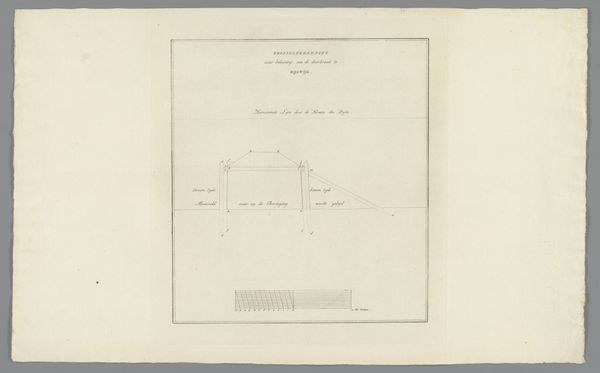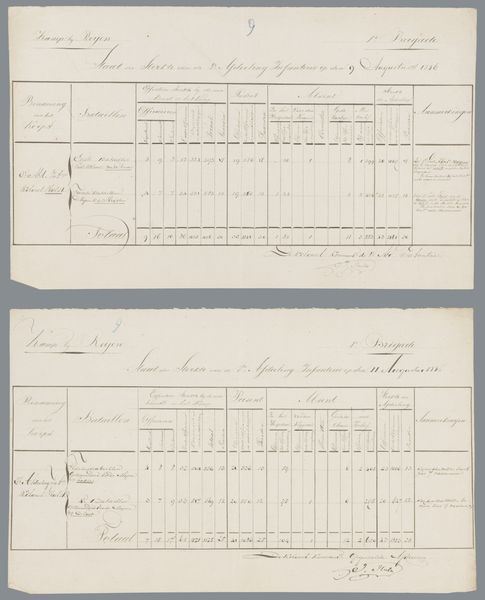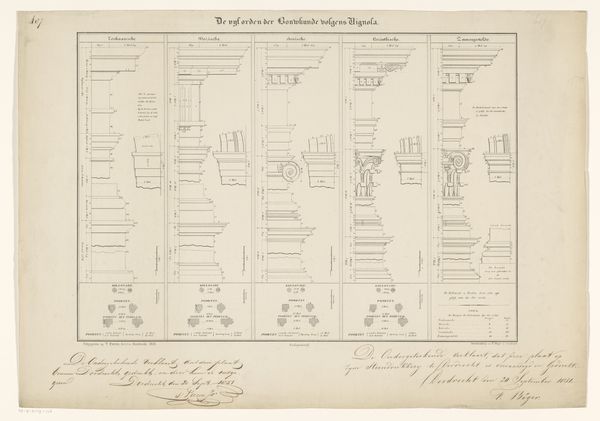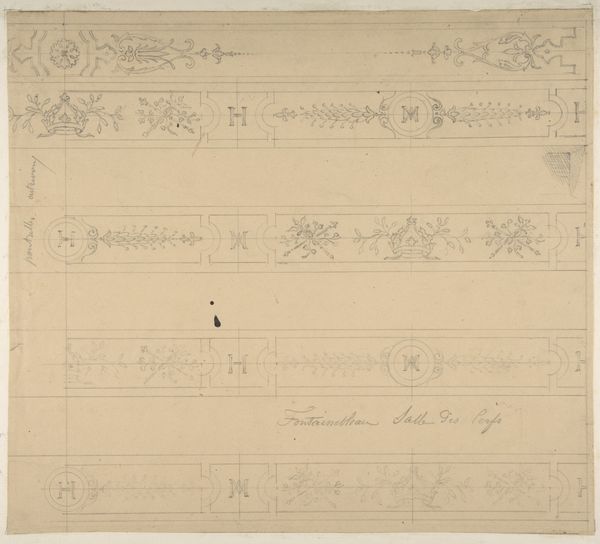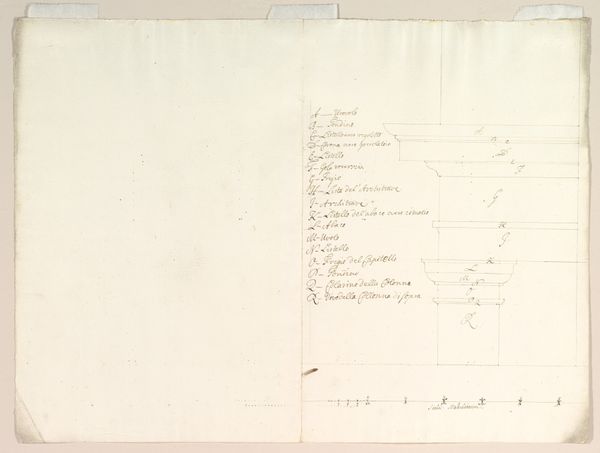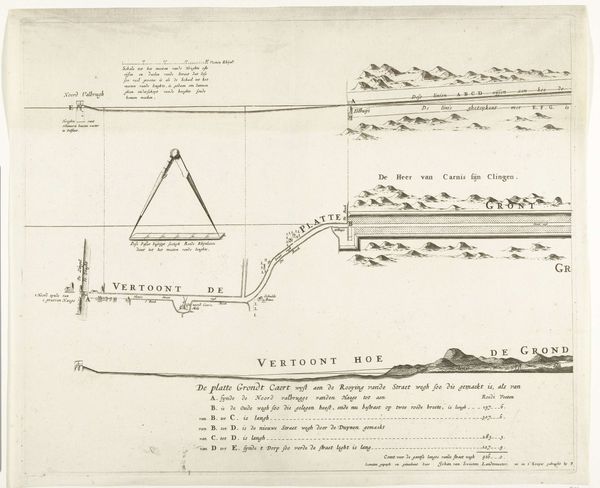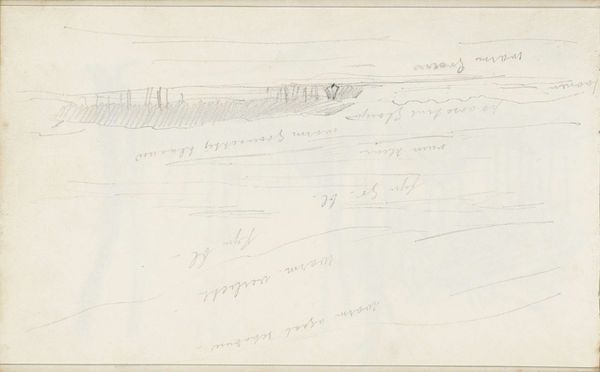
Slagorde van het keizerlijk leger in Sicilië, ca. 1701-1715 1701 - 1715
0:00
0:00
drawing, paper, ink
#
drawing
#
paper
#
ink
#
geometric
#
architectural section drawing
#
architectural drawing
#
history-painting
#
academic-art
#
miniature
Dimensions: height 181 mm, width 230 mm
Copyright: Rijks Museum: Open Domain
Curator: Today, we are examining "Slagorde van het keizerlijk leger in Sicilië," created by Samuel Du Ry de Champdoré sometime between 1701 and 1715. It’s a fascinating ink drawing on paper depicting the order of battle for an imperial army in Sicily. My initial response is that it resembles a rather clinical roadmap. The geometric arrangement is strikingly formal and almost unsettling. Editor: It is fascinating how he presents such controlled imagery, seemingly absent of context on the socio-political environment that shaped its creation. Think about the very specific historical implications related to cartography as both an imperialist and militaristic technology that has often gone unacknowledged. How do we then contextualize the imperial project itself? Curator: Absolutely. And understanding those historical conditions, along with an analysis into this academic artistic approach, helps us comprehend how power operates. This isn't just a battle plan; it's a visualization of power structures and control, meticulously laid out for strategic advantage and societal dominance. Editor: To expand, the rigid deployment speaks directly to questions surrounding the materiality of labor. Look at this drawing medium with such fine detail that represents immense logistical coordination that extends well beyond artistic expression. I wonder what Champdoré’s role and contribution to the military institution reveals about artistic practices of that time? Curator: That connection you make about Champdoré’s artistic practice contributing to something as grand as the battlefield calls to mind many questions about agency. It reminds us that art isn’t made in a vacuum; these illustrations supported specific political projects, revealing the nuanced and complex relationship that artists may play with dominant ideologies of war. Editor: This piece really reinforces the point that the tools and methods we use to depict even seemingly detached representations, like architectural drawing of battles, bear critical traces of the forces that shaped it. Curator: Indeed. The strategic plan opens discussions about gendered labor within military-academic institutions and epistemologies from a very interesting point in time, between the 17th and 18th centuries. Editor: For me, it’s a stark reminder of how artistic materials—ink and paper in this case—become active agents in social and political processes of imperial and wartime deployment. Curator: And for me, the "Slagorde van het keizerlijk leger in Sicilië" prompts critical reflection on the ongoing entanglements of art, identity, and power.
Comments
No comments
Be the first to comment and join the conversation on the ultimate creative platform.

